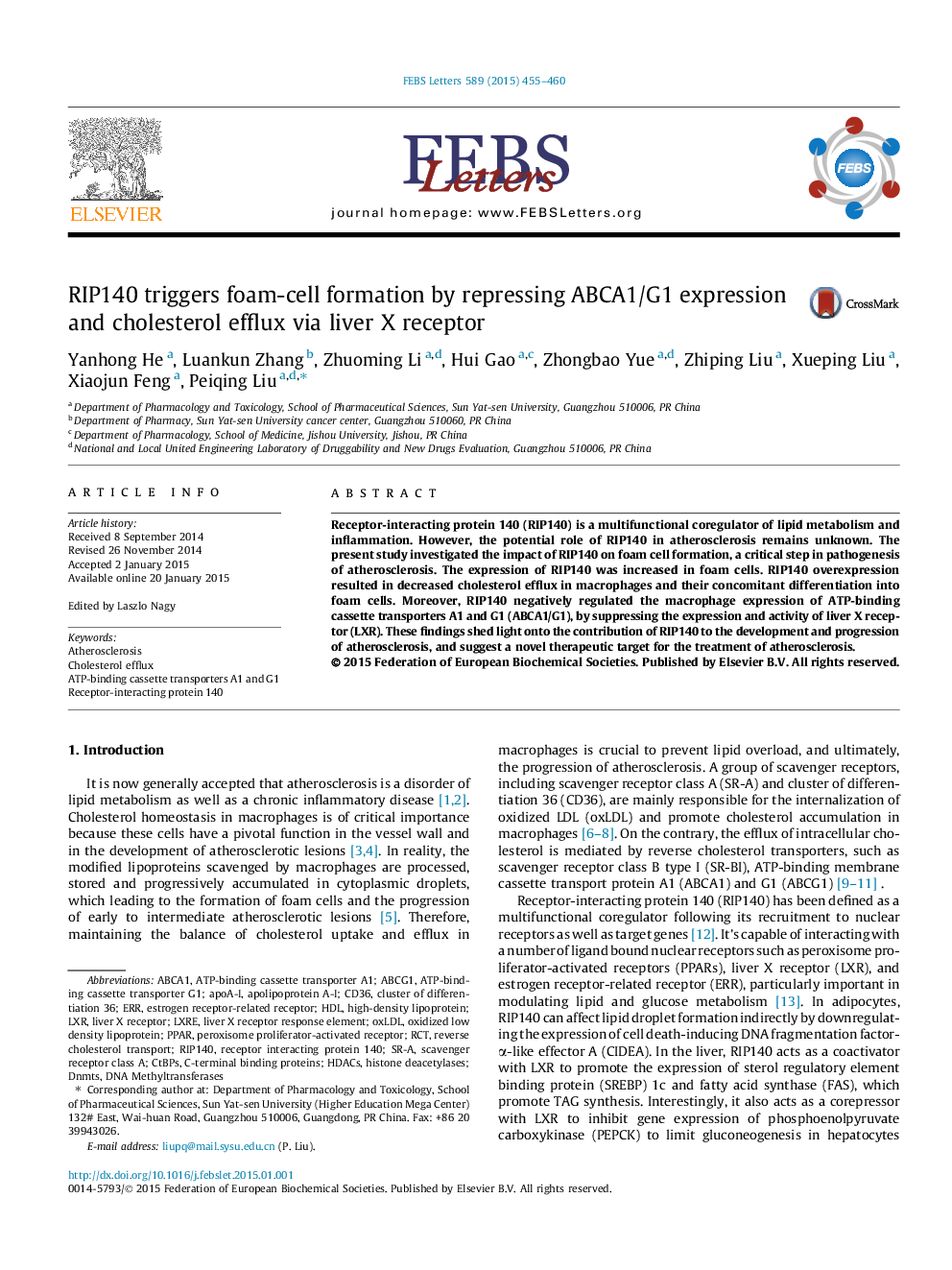| Article ID | Journal | Published Year | Pages | File Type |
|---|---|---|---|---|
| 10869996 | FEBS Letters | 2015 | 6 Pages |
Abstract
Receptor-interacting protein 140 (RIP140) is a multifunctional coregulator of lipid metabolism and inflammation. However, the potential role of RIP140 in atherosclerosis remains unknown. The present study investigated the impact of RIP140 on foam cell formation, a critical step in pathogenesis of atherosclerosis. The expression of RIP140 was increased in foam cells. RIP140 overexpression resulted in decreased cholesterol efflux in macrophages and their concomitant differentiation into foam cells. Moreover, RIP140 negatively regulated the macrophage expression of ATP-binding cassette transporters A1 and G1 (ABCA1/G1), by suppressing the expression and activity of liver X receptor (LXR). These findings shed light onto the contribution of RIP140 to the development and progression of atherosclerosis, and suggest a novel therapeutic target for the treatment of atherosclerosis.
Keywords
ERRABCG1oxLDLDNA methyltransferasesSR-Ascavenger receptor class ALXRHDACsDNMTsRCTRIP140CD36LXREPPARApoA-IABCA1HDLreceptor-interacting protein 140ATP-binding cassette transporter A1ATP-binding cassette transporter G1high-density lipoproteinAtherosclerosisApolipoprotein A-ICholesterol effluxcluster of differentiation 36oxidized low density lipoproteinhistone deacetylasesliver X receptorreverse cholesterol transportperoxisome proliferator-activated receptorestrogen receptor-related receptorReceptor interacting protein 140
Related Topics
Life Sciences
Agricultural and Biological Sciences
Plant Science
Authors
Yanhong He, Luankun Zhang, Zhuoming Li, Hui Gao, Zhongbao Yue, Zhiping Liu, Xueping Liu, Xiaojun Feng, Peiqing Liu,
